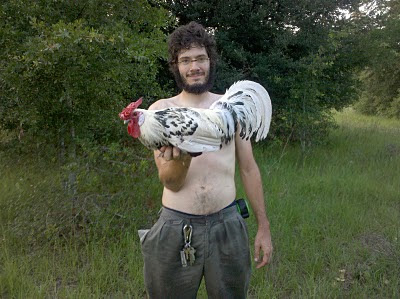
After Honey died we were on the look-out for a new milking cow, but it was a hopeless kind of a search because nothing was for sale around here and it had taken us so long to find Honey in the first place. We had really wanted American Milking Devons (Honey had been bred to a Devon bull), so I looked around for any Devon cows for sale and found some listings. Most of the cows had already been sold, but one desperate-looking listing said "make an offer," and when I wrote to them they said they still had the cows for sale. They were located up in Wisconsin, which required us to find a shipper. They suggested Uship, which is a site which connects shippers and customers. The first offer we had on the shipping was too high, so I asked the people in Wisconsin if they could wait for us to find a better offer. They took a long time to reply and eventually said they wanted to get rid of the cows as soon as possible and that there were other people interested in them. So it
 seemed we might not get them after all. Then, later that same day, we got another offer that was very affordable and we went ahead and accepted the cows and mailed a check. It was a very tense several days while the people with the cows fumbled around with getting the cows checked at the vet and struggled to cash our cashier's check, for some reason we still don't entirely understand. At last the cows were on their way--thanks the the shipper Rolf--who really had to do most of the dealing with those people. And it still didn't quite seem real. Then at last they were there--on our farm, and we have the sort of cows we have wanted to get for so long. They are just beautiful--Geranium (who is bred for April) and her baby. They are the most beautiful color, and very stocky, with a very pleasing cow-shape. We are so happy!
seemed we might not get them after all. Then, later that same day, we got another offer that was very affordable and we went ahead and accepted the cows and mailed a check. It was a very tense several days while the people with the cows fumbled around with getting the cows checked at the vet and struggled to cash our cashier's check, for some reason we still don't entirely understand. At last the cows were on their way--thanks the the shipper Rolf--who really had to do most of the dealing with those people. And it still didn't quite seem real. Then at last they were there--on our farm, and we have the sort of cows we have wanted to get for so long. They are just beautiful--Geranium (who is bred for April) and her baby. They are the most beautiful color, and very stocky, with a very pleasing cow-shape. We are so happy!










 Here is a wild harvest--wild muscadine grapes, fox grapes and lactarius mushrooms--yum!
Here is a wild harvest--wild muscadine grapes, fox grapes and lactarius mushrooms--yum!


































